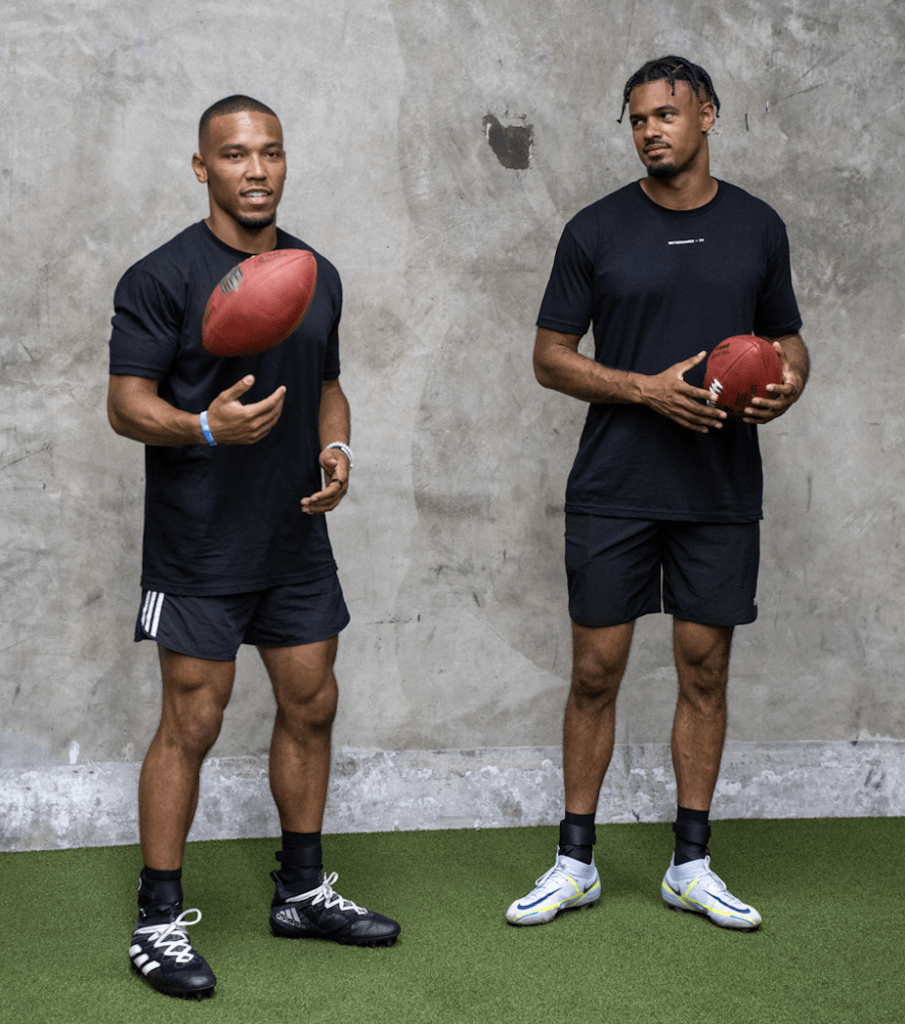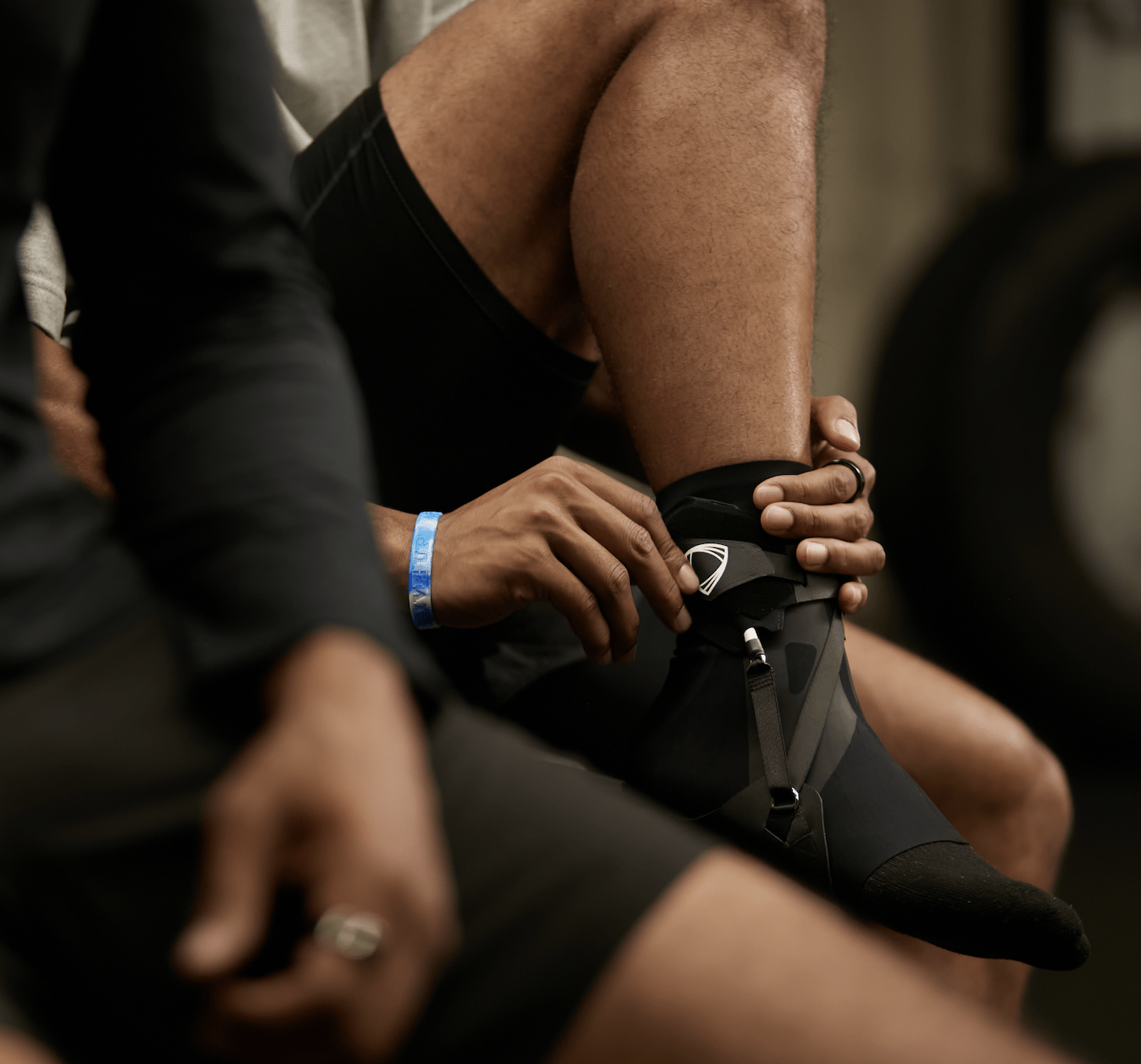Welcome to our interview with the innovative team behind BetterGuard, Betterguards Technology, Inc. Today, we celebrate their recent victory at the FIT Sport Design Awards, where their ankle brace was named Sport Gear Design of the Year. BetterGuard has revolutionized how athletes approach injury prevention and recovery, offering an unparalleled blend of protection and performance.
Designed for both elite and amateur athletes, the BetterGuard ankle brace features an adaptive ankle stabilizer that automatically activates during sudden ankle twists or turns, much like a seatbelt in a car, preventing injuries and then releasing once the threat has passed. This innovation has enabled athletes to return to play 54.4% faster and reduced severe ankle injuries by 62.5% compared to traditional methods.
With the backing of the NBA Launchpad Program and the endorsement of top athletes across the NBA, NFL, and NCAA, such as Detroit Lions wide receiver Amon-ra St.Brown, BetterGuard’s lightweight design offers dynamic support without compromising mobility. Athletes can trust the brace to allow full movement while providing the necessary protection to prevent injuries.
Today, we delve into the story behind this award-winning product with insights from Tony Verutti, CEO of BetterGuard. Verutti brings extensive experience in leading international operations, business development, and global licensing, with a dedicated commitment to sustainability. His vision and leadership have been instrumental in establishing BetterGuard technology as an essential component in sports performance and injury prevention strategies. Join us as we chat with Tony Verutti to explore the BetterGuard’s profound impact on the sports community, and the future advancements in injury prevention technology.

1. What sparked your journey into the sports design industry, and how did your academic and professional experiences contribute to your work on The BetterGuard ankle brace?
At the heart of every game-changing product and company is a desire to solve a problem that truly matters. Our journey into the sports design industry began with a simple, profound question: Why do athletes have to endure so many preventable injuries? As athletes ourselves, we understand the pain and frustration of injuries. Our sports science and technology background gave us the tools to tackle this issue head-on. Starting in a modest lab in Germany a decade ago, we were driven by a vision to end ankle injuries. Today, that vision has blossomed into a global movement, transforming how athletes perform and protect themselves.
2. Can you tell us a bit about the development process of The BetterGuard? What was the original vision?
The development of The BetterGuard was a journey of relentless innovation and collaboration. The original vision was clear: to create an ankle stabilizer that provides unparalleled protection without sacrificing the natural range of motion. We wanted athletes to feel as if they were not wearing a brace at all, yet be fully protected from sudden twists and rolls. This vision guided every step of our development process, from initial prototypes to the final product. It was about merging biomechanics with cutting-edge technology, and most importantly, listening to the needs of athletes.
3. It is incredible that you’ve created something that can prevent one of the most common injuries among athletes. Can you explain how the unique adaptive ankle stabilizer works in more detail?
The magic of The BetterGuard lies in its adaptive technology. Imagine an intuitive system that responds in real-time to the demands of an athlete’s movements. Our stabilizer is engineered with a unique responsive mechanism that activates during sudden ankle movements, providing instant support and preventing injuries. Yet, it remains flexible and unrestrictive during regular activities. It’s like having an invisible guardian that steps in only when you need it, allowing athletes to push their limits without fear of injury.
4. What were some of the biggest challenges you faced while developing The BetterGuard?
Every breakthrough comes with its set of challenges. For us, the biggest hurdle was achieving the perfect balance between protection and mobility. We refused to compromise on either. Countless iterations, rigorous testing, and invaluable feedback from athletes helped us fine-tune the technology. Another challenge was ensuring the product could be universally adopted, which meant making it adaptable to different sports and individual needs. But every obstacle only fueled our determination to create something truly game-changing.
5. The BetterGuard has been adopted by elite athletes all over the US, how do these partnerships impact your product and brand?
Partnerships with elite athletes are a cornerstone of our success. As part of the NBA Launchpad program in 2022, we had early adoption with elite basketball players. From there we made inroads across every other major sport and league. These athletes push our product to its limits, providing us with critical insights and feedback. In the early stage of the business having professional athletes trusting the product not only validates our technology but also elevates our brand, showcasing the effectiveness and reliability of The BetterGuard. Working closely with them, we continuously refine and enhance our products, ensuring we meet the highest standards of performance and protection. It’s a symbiotic relationship that drives innovation and builds trust in our brand.
6. How important is sustainability to your company, and what steps have you taken to ensure it is always at the forefront of any project?
Sustainability is integral to our mission at Betterguards. We believe that protecting athletes shouldn’t come at the expense of our planet. When you look at the numbers of how much athletic tape is used in the course of a season, it’s pretty mind-blowing. And it’s all single-use. We want to replace tape as the standard. Not only because it loses its effect after 10-15 minutes, but it’s also extremely wasteful. We have and designed our products for durability and longevity. Our commitment to sustainability extends beyond our products to our entire operation, including our shipping process. We are continuously striving to minimize our environmental footprint while maximizing positive impact.

7. Congratulations on winning the FIT Sport Design Awards! How does it feel to receive this award, and what impact has it had on you and your team?
Receiving the FIT Sport Design Award is a tremendous honor and a testament to the hard work and dedication of our entire team. It validates our vision and the innovative spirit that drives us. This award has energized our team, reaffirming our belief in the transformative power of our technology. The recognition is a milestone that motivates us to continue pushing boundaries and setting new standards in sports technology.
8. What does the future hold for Betterguards Technology, Inc.? Are there any upcoming products or innovations that you can tell us about?
The future is incredibly exciting for Betterguards. We are continually exploring new frontiers in sports technology, driven by our passion for innovation. While I can’t reveal all the details just yet, I can tell you that we are working on expanding our range of protective gear, incorporating advanced materials. Our goal is to create a comprehensive suite of products that safeguard athletes from head to toe, enhancing performance and preventing injuries.
9. Lastly, what advice would you give to aspiring designers who want to make it big in the sports technology industry?
My advice to aspiring designers is simple: stay curious, stay passionate, and never lose sight of the athletes. Innovation comes from a deep understanding of the problems you are trying to solve and a relentless pursuit of excellence. Embrace failure as a learning opportunity and always seek feedback from those who will benefit from your work. Remember, great design is not just about aesthetics or functionality; it’s about creating products that truly make a difference in athletes’s lives. Keep pushing boundaries, and don’t be afraid to challenge the status quo.










